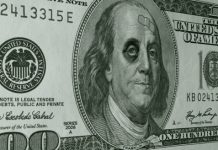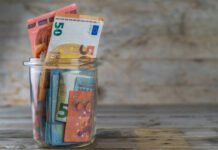Markets
Black Friday takes off as Red Friday. A new variant of the Covid-virus is spreading rapidly in South-Africa and is outcompeting other variants at lightening speed. It put global governments on red alert, adding South Africa and its neighboring countries back on travel restriction lists. The virus news triggers outright risk aversion this morning. Asian stock markets lose up to 2% with the Nikkei underperforming (-2.5%). Core bonds fall prey to short covering, sending the German Bund and US Note future significantly higher. The damage in yield terms for the US 10y yield is almost 10 bps compared to Wednesday’s close. US markets were closed yesterday in observance of Thanksgiving. The latter by the way risks being catalyst of a new surge of Covid-infections in the US. The jury is still out on that one. In other asset classes, gold recovers from a 5-day beating. Gold serves as an inflation hedge, but gets smashed when real rates are rising. That’s exactly what had been the case the past days. This morning’s risk-off brings bullion back above $1800/ounce. Oil and commodity prices in general decline by up to 5% (iron ore). Brent crude falls from around $82/b to $80/b. The chain of command in FX space is clear. The Japanese yen and Swiss franc are undisputed winners. The Japanese yen this way finally gets some reprieve after spending some days at lowest levels since 2017 against the dollar. USD/JPY sheds a big figure from 115.40 to 114.40. EUR/CHF tests the lowest levels (strongest for CHF) since 2015 in a move the SNB surely hates to see. We wondered for some time already where the pain threshold for the central bank is situated, but admit that market conditions don’t really allow for rowing against the tide for now. The single currency and the greenback hold a tight balance for now. The dollar traditionally outranks the euro in such market environment. At least the ECB’s stubborn inflation approach serves good for something. Smaller and less liquid currencies lose out against the euro. EUR/GBP extends its bottoming-out process, currently changing hands around 0.8450. The risk environment complicates CE currencies inflation crusade, which (for PLN & HUF) already receives an “insufficient” from markets. The effect from yesterday’s MNB 1-week deposit rate hike (from 2.5% to 2.9% vs 2.1% base rate) is for a large part erased at EUR/HUF 367.50. EUR/PLN marches back to the 4.70 area. EUR/CZK trades at the highest level since early November (25.70). The scorecard is similar for the likes of NZD/USD (test of YTD low at 0.68) and AUD/USD (test of YTD low at 0.71).
Today’s eco calendar is empty. On top, US markets close early. This market setting and uncertainty over the rapid development of the Covid-strain suggests that investors will hold on to this morning’s cautious approach going into the weekend.
News headlines
The UK along with Israel, Mozambique and Singapore will place six southern African countries, including Namibia, South Africa and others, on the red list of travel restrictions. The move follows a surge of a significantly mutated coronavirus variant that seems to be spreading considerably faster than the current dominant Delta strain. Direct flights from the countries are banned from midday today until it is able to quarantine arrivals for 10 days in hotels. This is scheduled to be up and running from Sunday morning. The South African rand accelerates a losing streak this morning with USD/ZAR surpassing 16 for the first time in a year.
Tokyo consumer prices in November rose the most in a year. The headline figure came out slightly above expectations, at 0.5% vs 0.4% y/y. Core measures excluding food rose from 0.1% last month to 0.3%. Energy remained a key driver though, since excluding that category along with food meant that November prices still declined with 0.3%. Nevertheless, the Bank of Japan’s newest board member Nakagawa said she’s seeing a gradual emergence of upward price trends, adding that consumer prices “don’t look like they will stay around zero forever”. The yen strengthens to USD/JPY 114.5 though this is exclusively on the back of Asian risk-off.













